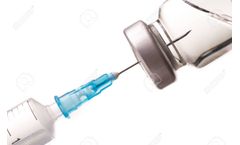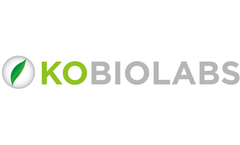Pro Inflammatory Cytokine Articles & Analysis: Older
10 articles found
Functionally, TREM1 acts as an amplifier of inflammatory responses. Upon activation, it potentiates the production of pro-inflammatory cytokines, such as tumor necrosis factor-alpha (TNF-α), interleukin-1 beta (IL-1β), and interleukin-6 (IL-6), thereby exacerbating the inflammatory cascade. ...
Binding of adjuvants to antigens can increase the surface area of the antigen, and the biological effects include (1) deposit effect of antigen; (2) upregulation of cytokine and chemokine expression, and recruitment of immune cells at the injection site; (3) activation of inflammasome; and (4) carrier effects. ...
The binding of IL-36 Ra to IL-1R6 does not lead to the recruitment of IL-1RAcP. Therefore, the pro-inflammatory cascade reaction is not initiated, realizing the anti-inflammatory characteristics of IL-36 Ra. ...
TSLP and TH2 In allergic inflammation, TSLP can strongly activate DCs (dendritic cells), which subsequently drive the development of naive TH cells into "inflammatory" effector TH2 cells that express classical TH2 cytokines, pro-inflammatory tumor necrosis factor-alpha (TNF-α), and anti-inflammatory IL-10. ...
Hypertrophy and hyperplasia of the adipocytes result in metabolic alterations and in the onset of a low grade chronic inflammatory state (14) due to the release of pro-inflammatory adipokines from adipose tissue that can trigger insulin resistance and diabetes mellitus leading to a sequentially increased cardiovascular risk (15). ...
Cytokines are classified according to their different roles in the inflammatory response: pro-inflammatory cytokines and anti-inflammatory cytokines. Pro-inflammatory Cytokines Interleukin-1 (IL-1) IL-1 is a proinflammatory ...
Patients with psychiatric problems have a profile of enhanced pro-inflammatory cytokines and increased oxidative stress, according to data. ...
At the same time, foreign mRNA can also activate the expression of pro-inflammatory cytokines such as interferon. Classification of mRNA delivery systems 1. ...
One of the proposed mechanisms for the progression of ALDs is binding of LPS to Toll-like receptor 4 (TLR4) in both Kupffer cells and hepatic stellate cells in the liver, which results in increased hepatic pro-inflammatory cytokines, such as tumor necrosis factor-α (TNF-α) and interleukin-1β (IL-1β) (Louvet and Mathurin, ...
Moreover, L. fermentum KBL375 showed strong down-regulatory effects on Th2-related cytokines including IL-4, IL-5, IL-13 and IL-31, and significant up-regulatory effects on anti-inflammatory cytokine IL-10 in AD-induced mice (P < 0.05) (Figure 4). ...








